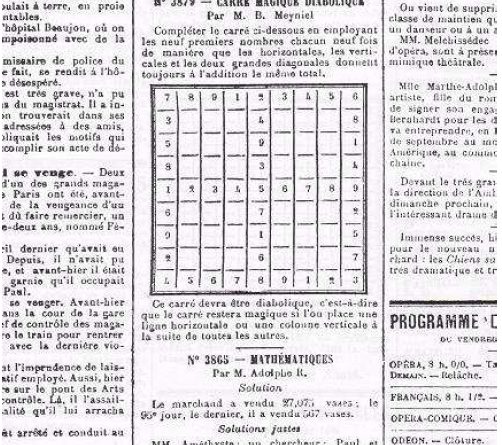A Brief History of Sudoku
Learn the origins of this great puzzle type.
Sudoku (also known as Number Place) is a logic-based, combinatorial number-placement problem. The goal of classic Sudoku is to fill a 9x9 grid with digits so that each column, row, and each of the grid's nine 3x3 subgrids (also known as "boxes," "blocks," or "regions") contain all of the numbers from 1 to 9. Finally, the puzzle setter generates a partially completed grid with a single solution for a well-posed puzzle.
In the nineteenth century, French newspapers carried Sudoku puzzle versions, and the puzzle has appeared in puzzle books under the name Number Place since 1979. However, the contemporary Sudoku did not become widely popular until 1986, when the Japanese puzzle manufacturer Nikoli produced it under the name Sudoku, which means "single number." It first appeared in a US newspaper, then The Times (London), in 2004, thanks to the work of Wayne Gould, who developed a computer program to generate unique puzzles quickly.

By B. Meyniel is the author of the puzzle. - La France newspaper, dated 6 July 1895. This image was copied by Christian Boyer (http://www.multimagie.com/indexengl.htm) from the French newspaper La France, dated 6 July 1895. It is uploaded here with his permission. Le poulet noir 15:54, 3 June 2006 (UTC), Public Domain, Link
The modern Sudoku puzzle was most likely devised anonymously by Howard Garns, a 74-year-old retired architect and freelance puzzle constructor from Connersville, Indiana. Dell Magazines initially published it in 1979 as Number Place (the earliest known example of modern Sudoku). Garns' name was always on the list of contributors in Dell Pencil Puzzles and Word Games issues that had Number Place but was never on the list in issues that did not. Unfortunately, he died in 1989 before he could see his brainchild become a worldwide success. It's unclear whether Garns was familiar with any of the French newspapers.
Variations
- Mini Sudoku - only uses numbers 1 through 6.
- Killer Sudoku - combines elements of Sudoku and Kakuro.
- Alphabetical Sudoku (Wordoku) - uses letters that are provided
- Hyper Sudoku (Windoku) - uses the classic 9×9 grid with 3×3 regions but defines four additional interior 3×3 regions in which the numbers 1–9 must appear exactly once.
- Twin Sudoku - two regular grids share a 3×3 box.